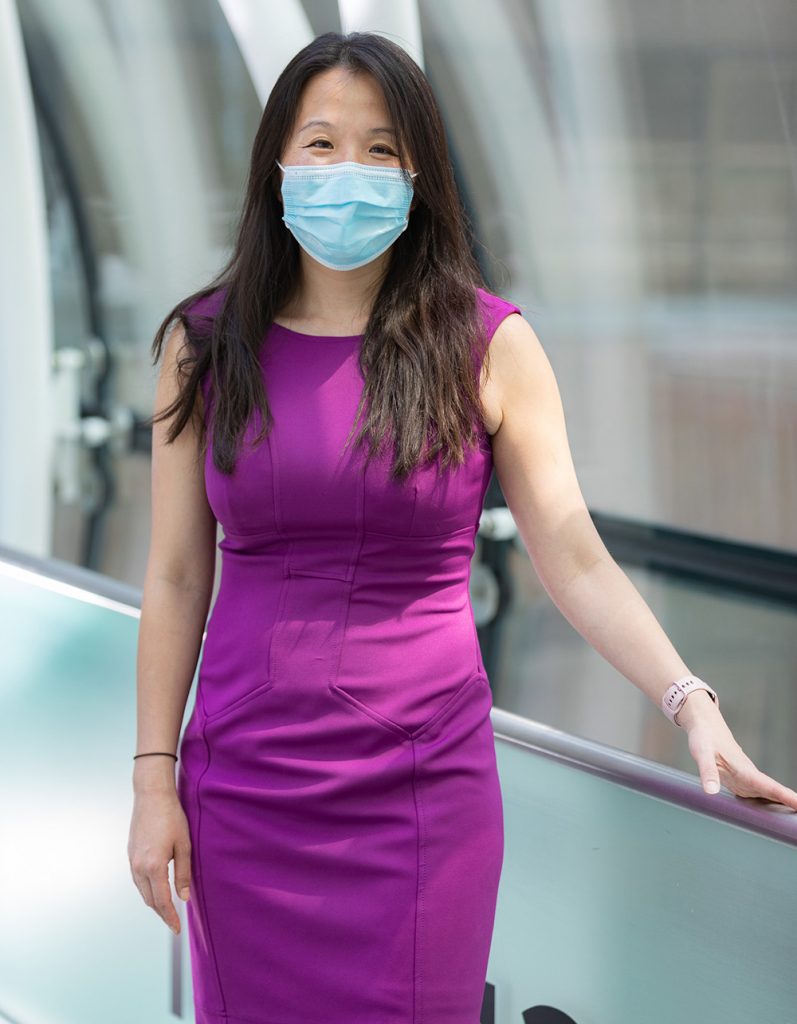‘I want our patients to lead the best possible lives’: Dr. Jiwon Oh shares her perspective for World MS Day

By Ana Gajic
(May 29, 2020) – For Dr. Jiwon Oh, the drive to find the cause and cure to multiple sclerosis (MS) is personal and professional.
When Dr. Oh was young, her mother suffered a stroke that led to a neurological disability. Then, while training to be a doctor, she realized many of the patients she was seeing in the MS clinic were in her age.
Now an MS Neurologist and Interim Medical Director of the MS Centre at St. Michael’s, Dr. Oh continues to be struck by the fact that MS is one of the only neurological disorders that affects young people in their 20s and 30s – people in the prime of their lives who have young children, mortgages to pay and are starting their careers.
MS causes severe nerve damage, which can eventually lead to disability. Dubbed by some as ‘Canada’s disease,’ the country has one of the world’s highest rates of the condition. Though there is no cure, there are many treatments. St. Michael’s is home to the country’s largest MS Clinic – seeing over 8,000 patients – and is a hub for research and innovation in the area.
For World MS Day on May 30, Dr. Oh is sharing why the disease and its mysteries drive her clinical and research pursuits. As she steps into her new role as the Interim Medical Director of the MS Centre, Dr. Oh sees a bright future for the field of research and clinical care.
What do you find most rewarding about being an MS neurologist?
Being able to establish long-term relationships with patients and working through challenges together with guidance from the latest scientific evidence is by far the most rewarding aspect of my job.
In addition to your clinical work, you’re also a researcher in the field of MS. Why are you interested in research in this area?
It is both exciting and rewarding to see how much we have learned in the field in the past 10 to 15 years and how these learnings have resulted in dramatically positive changes in the way we diagnose, monitor, and treat people with MS.
I am grateful to be part of a rapidly evolving field and to have the privilege of working with other clinicians and scientists who are passionate about creating positive change in the lives of people living with MS.
What are your research projects currently focused on?
I’m interested in developing advanced MRI techniques so that they are useful in MS care. Our team has a number of ongoing imaging studies where we are using state-of-the art imaging techniques in the brain and spinal cord in people with very early or asymptomatic MS.
We are hopeful that these techniques will shed light on how MS starts and develops, which could allow us to develop tools that are useful in care and better treatments.
As the new interim medical director of the MS Centre, what are you most looking forward to?
I am very excited to take on this role. I look forward to being able to work with the neurologists and entire multi-disciplinary team – which includes nurses, nurse practitioners, occupational therapists, physiotherapists, neuropsychiatrists, rehabilitation specialists, social work in addition to many others – to continue to build a clinic and care pathway that provides our patients with the most compassionate, scientific, and personalized care possible. I want our patients to lead the best possible lives while living with MS.
What do you want people to know about MS care and research at St. Michael’s?
We are deeply committed to people living with MS, and patient care is our top priority.
In the coming years, we will continue to improve our centre so that we can continue to provide comprehensive, personalized care for people living with MS. We are also committed to contributing scientifically to the field.
We hope that by combining our clinical and scientific strengths, we will be able to meaningfully change the lives of people living with MS.
